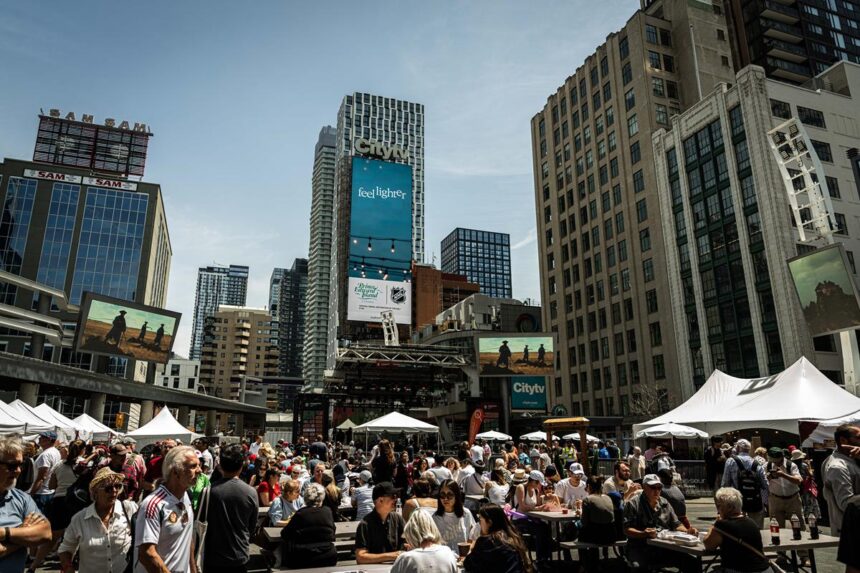Toronto’s streets came alive last weekend as HungaroFest 2025 transformed the city into a vibrant celebration of Magyar heritage, offering Canadians a rare immersive journey into Hungary’s rich cultural landscape. As someone who has chronicled cultural festivals across North America for years, I can confidently say this edition of HungaroFest stands out as a masterclass in cultural diplomacy.
The three-day extravaganza, centered in Toronto’s Distillery District, drew unprecedented crowds of both Hungarian-Canadians and curious locals eager to experience authentic Hungarian traditions. What struck me most was how seamlessly the festival balanced honoring centuries-old traditions while showcasing contemporary Hungarian innovations and artistic expressions.
“This isn’t just about preserving our past—it’s about building bridges through culture,” explained festival organizer Katalin Novák during our conversation. Her words resonated throughout the event, where traditional folk dancers in meticulously embroidered costumes shared spaces with avant-garde Hungarian DJs and digital artists.
The culinary pavilion became the festival’s beating heart, with lines forming hours before opening for a taste of authentic gulyás (goulash), kürtőskalács (chimney cake), and pálinka tastings led by master distillers flown in from Budapest. What might have been merely nostalgic comfort food for Hungarian-Canadians became an eye-opening gastronomic adventure for Toronto foodies, many of whom I overheard planning trips to Hungary after their first bite of properly prepared langos.
Perhaps the most significant achievement of HungaroFest 2025 was its ability to transcend the typical “food and folk dance” formula that often limits cultural festivals. The dedicated “Innovation Hungary” exhibition showcased the country’s technological contributions and startups, highlighting why Budapest has earned its reputation as the “Silicon Valley of Central Europe.” Interactive demonstrations of Hungarian-developed software, medical technology, and sustainable energy solutions provided substantive context to Hungary’s contemporary identity.
The festival’s film program deserves special mention, featuring a carefully curated selection of classic and contemporary Hungarian cinema. Screenings of works by legendary directors like Béla Tarr alongside emerging filmmakers offered Toronto cinephiles a comprehensive overview of Hungary’s significant contributions to world cinema.
What differentiated this celebration from previous years was the conscious effort to address more complex aspects of Hungarian identity and history. Panel discussions featuring historians, authors, and community leaders explored topics ranging from the Hungarian diaspora experience to reconciliation efforts with neighboring countries—conversations that added intellectual depth to the festivities.
Toronto’s relationship with its Hungarian community has deep roots dating back to significant waves of immigration following the 1956 Revolution. Today, approximately 53,000 Torontonians identify as having Hungarian heritage, according to recent census data. HungaroFest serves as both a homecoming celebration for this community and an open invitation for cultural exchange.
The festival concluded with a spectacular performance by the Hungarian State Folk Ensemble at Roy Thomson Hall, selling out all 2,630 seats—a testament to Toronto’s appetite for authentic cultural experiences that go beyond surface-level appreciation.
As cities worldwide grapple with questions of multiculturalism and integration, events like HungaroFest demonstrate how cultural celebrations can transcend mere entertainment to become meaningful platforms for education, connection, and mutual understanding. Toronto’s enthusiastic embrace of Hungarian culture this weekend represents the best of what cultural festivals can achieve—not just preservation of heritage, but active, evolving cultural dialogue.
Will this renewed interest in Hungarian culture translate into increased tourism, business connections, or artistic collaborations between Canada and Hungary? If the energy and engagement at HungaroFest are any indication, we may be witnessing the beginning of a significant cultural renaissance that extends far beyond a single weekend of festivities.
For more insights on global cultural celebrations and their impact, visit our CO24 Culture section, or explore more about emerging social phenomena in our CO24 Trends coverage.


















